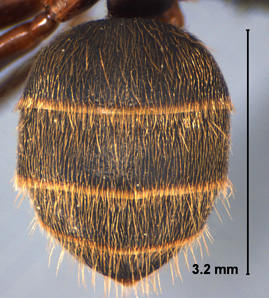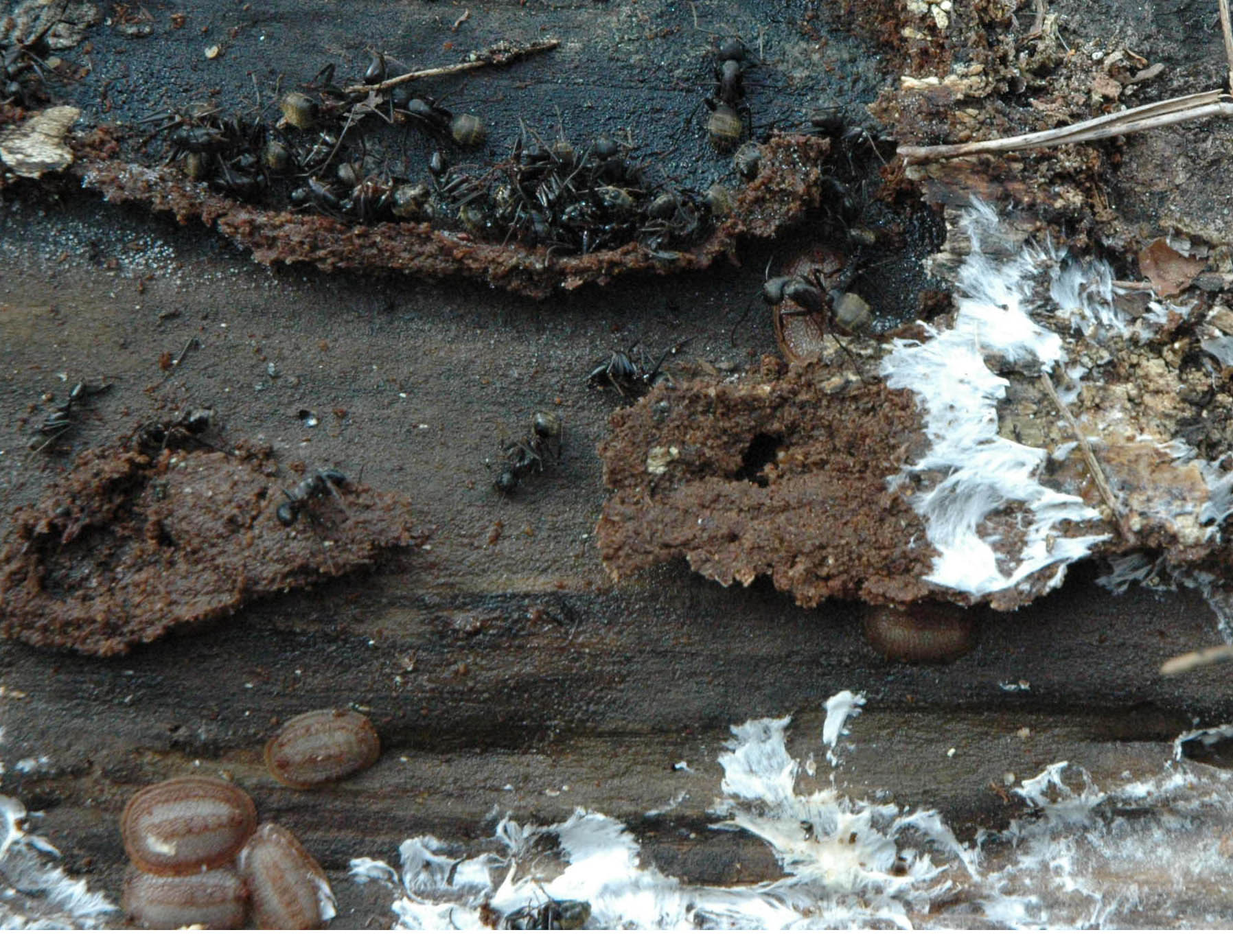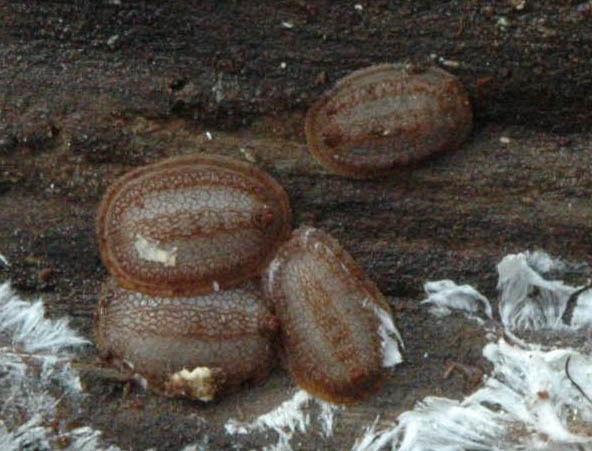Subfamily FORMICINAE Author: Joe A. MacGown |
|||
 Camponotus chromaiodes, dorsal view of gaster. Note the pubescence extending well past the edges of the tergites; more than half of the length of those hairs reach the next tergite (Compare to C. pennsylvanicus gaster). |
|||
Introduction
Ants in the genus Camponotus are collectively known as carpenter ants because some species nest in wood, including man-made structure. This genus includes some of the largest and most common ants in the world, and they are found in all biogeographical regions (Bolton, 1995). More than 900 species of Camponotus are known worldwide, with 50 species reported from the United States (Hanson and Klotz, 2005), and 20 species found east of the Mississippi River (Deyrup, 2003; Smith, 1979).
Species in this genus are variable in size with workers ranging in size from 3 to 15 mm or more in length and queens (also referred to as females) of some species attaining a length of 19 mm or more. Many species are polymorphic. Workers have a 12-segmented antenna that lacks an apical club. Antennal fossae do not touch the posterior border of the clypeus. Ocelli are not present on the heads of workers. The workers of most species have an indistinct metanotal suture between the promesonotum and the propodeum, although this suture is present in C. sexguttatus and some members of the subgenus Colobopsis. Those species that lack the obvoius and deep metanotal suture have the shape of the alitrunk in a smoothly curved arc (as seen in profile).
Camponotus chromaides is in the subgenus Camponotus, which includes some of the true carpenter ants that nest in wood. Species in this subgenus are large ants with workers ranging approximately 6-14 mm in length. The clypeus is ecarinate to only scarcely carinate, antennal scapes are not flattened at the bases, clypeal fossae are well developed, and the heads of major workers are usually broader than long. This subgenus includes three species in Mississippi.
Camponotus chromaiodes is sometimes called the red carpenter ant, because of the red coloration often found on the rear part of alitrunk and legs. This is a large species with major workers having an overall length of 6-13 mm. The posterior part of propodeum, the petiole, the base of gaster, and legs are usually reddish, and the rest of the body black (color is variable, sometimes there is less red present). Appressed hairs found on gaster are more numerous and long, and they overlap the posterior edges of the gastral tergites (this is best seen in dorsal view) by at least half of their lengths and are golden in color. The two top photos above show two variations of major workers of Camponotus chromaiodes (formerly called C. ferrugineus). It is not unusual to see the darker form such as is shown on the above right and it is sometimes difficult to separate this color form from C. pennsylvanicus.
Identification
Worker. Length from 6 to 13 mm or more. Major and minor workers of this species are usually dark with a black head and gaster and have at least some ferrugineous coloration on the body, especially on the propodeum, petiole, base of gaster, bases of legs, and sometimes extending over much of the alitrunk. Coloration of this species is extremely variable with the entire alitrunk sometimes being almost a deep ferrugineous red to mostly black with very little reddish coloration. Erect hairs are lacking on the gena, malar area, occipital corners of the head, and the scape, except apically (Fig. 4). The gaster is covered with golden appressed pubescence that almost hides the surface, with many of the appressed hairs being as long as the erect hairs present. Scattered, appressed, golden pubescence is found on the alitrunk, including the side of the propodeum.
Queen. Similar to the workers in appearance, but larger in size with much of the alitrunk dark in color.
Male. Mostly black and smaller than the queen, large eyes.
Biology and Economic Importance
Nests are often found in and beneath rotting logs and stump with galleries
typically extending into soil. They also nest in dead standing trees or
in moist or otherwise degraded wood in buildings. These are very common ants in Mississippi and can have very large nests with many thousands of workers. Alates have been collected throughout the summer and into early Fall in AL and MS.
The ant loving cricket, Myrmecophilus pergandei and Microdon sp. larvae (Syrphidae) have both been collected in C. chromaiodes colonies in this region.
Distribution
This species has been reported from the northeastern states west to Illinois, Kansas, Michigan, and Nebraska and south to Mississippi and Alabama (Smith, 1979; MacGown and Forster, 2005), but it has not been reported from Florida (Deyrup, 2003).
Literature Cited



















